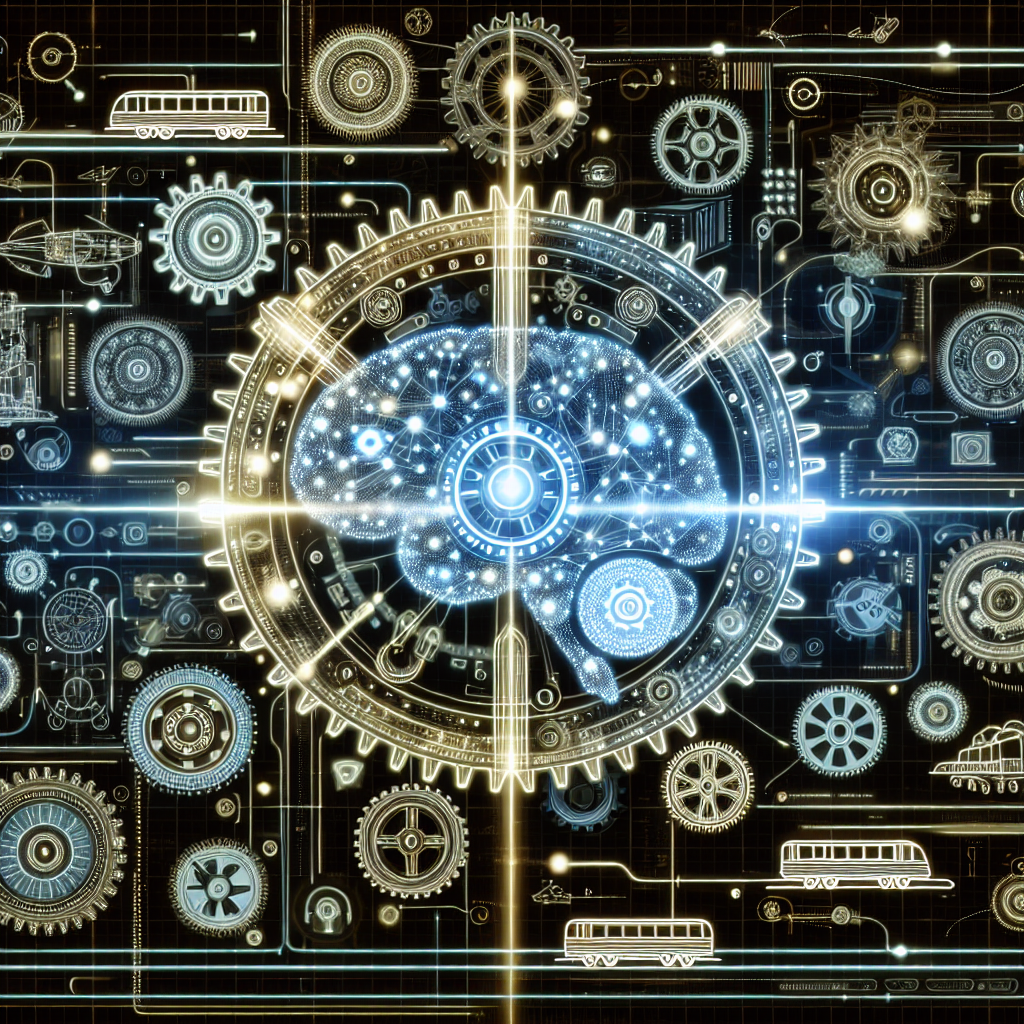Artificial Intelligence (AI) has revolutionized many industries, and transportation is no exception. One of the areas where AI is making a significant impact is in predictive maintenance. Predictive maintenance involves using data and analytics to predict when maintenance on equipment or vehicles will be needed, allowing for more efficient and cost-effective repairs. In the transportation industry, this can mean fewer breakdowns, lower maintenance costs, and increased safety for passengers and cargo.
There are several benefits to using AI in predictive maintenance for transportation. Some of the key advantages include:
1. Improved Safety: By using AI to predict when maintenance is needed, transportation companies can catch potential issues before they become safety hazards. This can help prevent accidents and ensure the safety of passengers and drivers.
2. Reduced Downtime: Predictive maintenance allows transportation companies to schedule repairs during off-peak times, minimizing downtime and avoiding disruptions to operations. This can result in increased efficiency and cost savings for the company.
3. Cost Savings: By accurately predicting when maintenance is needed, transportation companies can avoid unnecessary repairs and reduce the risk of equipment failures. This can result in lower maintenance costs and increased profitability for the company.
4. Increased Asset Lifespan: Predictive maintenance can help extend the lifespan of transportation assets by identifying and addressing potential issues before they cause major problems. This can help companies get the most out of their investments and reduce the need for costly replacements.
5. Data-Driven Decision Making: AI in predictive maintenance allows transportation companies to make data-driven decisions about when and how to perform maintenance. This can help optimize maintenance schedules, reduce costs, and improve overall operational efficiency.
In addition to these benefits, AI in predictive maintenance for transportation can also help companies comply with industry regulations, improve customer satisfaction, and enhance overall performance. As technology continues to advance, the use of AI in predictive maintenance is likely to become even more prevalent in the transportation industry.
FAQs:
Q: How does AI in predictive maintenance work?
A: AI in predictive maintenance uses data from sensors, equipment, and historical maintenance records to predict when maintenance will be needed. Machine learning algorithms analyze this data to identify patterns and trends that can help predict when equipment may fail. By using AI, transportation companies can proactively address maintenance issues before they become costly problems.
Q: What types of transportation can benefit from AI in predictive maintenance?
A: AI in predictive maintenance can benefit a wide range of transportation modes, including commercial trucks, buses, trains, airplanes, and ships. By using AI to predict maintenance needs, transportation companies can improve safety, reduce downtime, and increase efficiency across their fleets.
Q: How can transportation companies implement AI in predictive maintenance?
A: Transportation companies can implement AI in predictive maintenance by investing in the necessary technology and expertise. This may involve partnering with AI vendors, hiring data scientists, and integrating AI tools into existing maintenance systems. By taking a proactive approach to implementing AI in predictive maintenance, transportation companies can reap the benefits of this technology.
Q: What are some challenges associated with AI in predictive maintenance for transportation?
A: Some of the challenges associated with AI in predictive maintenance for transportation include data quality issues, integration with existing systems, and the need for specialized expertise. Additionally, there may be concerns about data privacy and security when using AI for predictive maintenance. Despite these challenges, the benefits of AI in predictive maintenance outweigh the potential drawbacks for many transportation companies.
In conclusion, AI in predictive maintenance is transforming the transportation industry by improving safety, reducing downtime, and cutting costs. By leveraging the power of AI to predict maintenance needs, transportation companies can optimize their operations, extend the lifespan of their assets, and enhance overall performance. As technology continues to advance, the use of AI in predictive maintenance is likely to become even more essential for transportation companies looking to stay competitive in a rapidly evolving industry.

